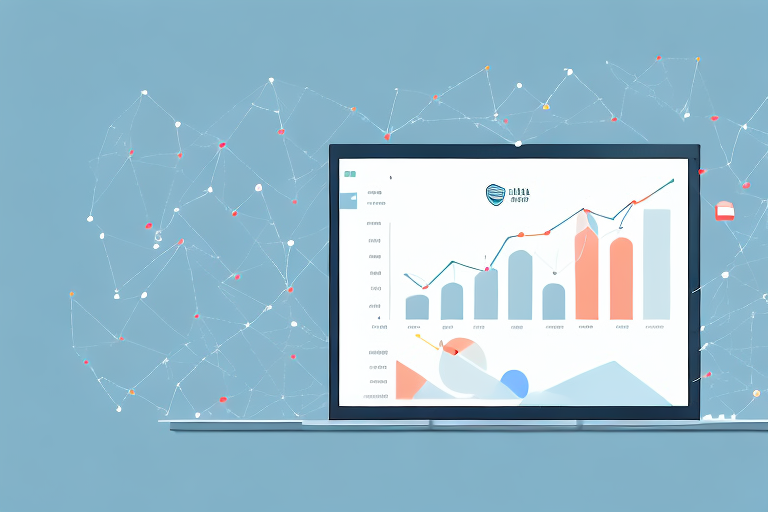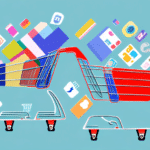Benefits of Email Marketing for E-commerce
Email marketing is a powerful tool for e-commerce businesses, enabling regular communication with customers and fostering long-term relationships. Studies have shown that email marketing boasts one of the highest ROIs among all digital marketing channels, making it an essential component of any e-commerce strategy. For instance, according to Campaign Monitor, the average ROI for email marketing is approximately $42 for every $1 spent.
Compared to social media marketing, email marketing typically achieves a higher conversion rate, as it targets customers who have demonstrated a genuine interest in your brand or products. Additionally, emails allow for a more personalized touch, enabling businesses to connect with customers on a deeper level.
Furthermore, email marketing provides the ability to track and analyze customer behavior. Utilizing email marketing software, businesses can monitor open rates, click-through rates, and conversion rates, allowing them to optimize their campaigns for maximum effectiveness. This data also facilitates the segmentation of customers based on behavior and preferences, enabling the delivery of targeted and relevant emails to specific customer groups. Overall, email marketing is invaluable for increasing customer engagement, driving sales, and building brand loyalty.
Building and Growing a High-Quality Email List
Strategies for List Building
A high-quality email list is crucial for successful email marketing campaigns. Building a list comprised of subscribers genuinely interested in your brand and products ensures higher engagement and conversion rates. One effective method is creating compelling lead magnets that offer value, such as exclusive content, discounts, or free resources, in exchange for a subscriber’s email address. Additionally, implementing pop-up sign-up forms on your website and social media channels can significantly grow your email list by capturing visitors’ attention at key interaction points.
Maintaining List Quality
Maintaining a high-quality email list involves regular list cleaning to remove inactive or invalid email addresses, thereby reducing bounce rates and improving deliverability. A high bounce rate can harm your sender reputation and decrease the likelihood of your emails reaching the inbox. Implementing double opt-in procedures and regularly verifying email addresses are effective strategies to maintain list integrity.
Crafting Effective Email Campaigns
Creating Compelling Content
Effective email content should be engaging and provide tangible value to your subscribers. Tailoring content to your target audience with clear calls to action (CTAs) is essential. Content should be concise, catchy, and well-structured to maintain subscriber interest. Implementing A/B testing can help identify which messages resonate best with your audience, allowing for continuous improvement of campaign effectiveness.
Designing Visually Appealing Emails
The design of your emails plays a crucial role in capturing and retaining subscriber attention. Utilize attractive images, complementary colors, and readable fonts to make your emails visually appealing. Adopting a responsive design ensures that your emails display correctly across all devices, including desktops, laptops, and mobile devices. Furthermore, maintaining a clean and organized layout with ample white space enhances readability and user experience.
Personalizing Your Emails
Personalization is key to increasing email engagement and conversion rates. By using subscribers’ names and tailoring content based on their interests and past behavior, you can create a more individualized experience. For example, recommending products based on previous purchases or sending birthday discounts can significantly enhance the relevance and effectiveness of your emails.
Personalization and Automation in Email Marketing
Setting Up Automated Campaigns
Automated email campaigns enable e-commerce businesses to streamline their marketing efforts while maintaining a personalized touch. Triggered emails, such as abandoned cart reminders, order confirmations, and post-purchase follow-ups, are sent automatically based on specific customer actions or events. Automation not only saves time and effort but also ensures timely and relevant communication with customers.
Automated campaigns allow for targeted messaging to specific customer segments, increasing the likelihood of conversions. For instance, sending a discount offer to customers who have made multiple purchases can encourage repeat business and foster customer loyalty.
Integrating Social Media and Measuring Success
Leveraging Social Media
Integrating social media with your email marketing strategy can amplify your reach and engagement. Use social media platforms to promote your email campaigns, encouraging followers to subscribe to your email list. Additionally, social media insights can provide valuable data on your target audience, enabling more targeted and effective email campaigns.
Including social sharing buttons in your emails allows subscribers to easily share your content on their own social media channels, potentially attracting new subscribers and expanding your audience. Additionally, utilizing user-generated content from social media, like customer reviews or photos, can make your emails more engaging and authentic.
Measuring ROI
Measuring the Return on Investment (ROI) of your email marketing efforts is essential for assessing their effectiveness and optimizing future campaigns. Key metrics to track include revenue generated from email campaigns, customer lifetime value, and customer acquisition cost. By analyzing these metrics, you can identify which campaigns are performing well and which need adjustments.
Segmenting your email list based on demographics, purchase history, and engagement levels can lead to more tailored and effective campaigns, ultimately enhancing ROI. Additionally, experimenting with the timing and frequency of your emails can help determine the optimal schedule that maximizes engagement without causing subscriber fatigue.
Avoiding Common Mistakes and Looking Ahead
Common Pitfalls in Email Marketing
Several common mistakes can hinder the success of your email marketing strategy. Overloading subscribers with too many emails can lead to fatigue and increased unsubscribe rates. Failing to properly segment your email list can result in irrelevant content that disengages your audience. Additionally, not personalizing your emails or using spammy subject lines can decrease open and click-through rates.
Another critical error is neglecting to optimize emails for mobile devices. With a significant portion of emails being opened on smartphones and tablets, ensuring that your emails are mobile-friendly is essential for maintaining engagement and readability.
The Future of Email Marketing
The future of email marketing in the e-commerce industry is poised to be shaped by advancements in Artificial Intelligence (AI) and machine learning. These technologies will enable even greater levels of personalization, automating complex aspects of campaign management, and predicting customer behavior to create more effective and engaging email content.
Integrating email marketing with other digital channels will also become more seamless, allowing for more holistic and targeted marketing strategies. As consumer expectations evolve, email marketing will continue to adapt, maintaining its crucial role in driving e-commerce success.
Conclusion
Maximizing your e-commerce business with email marketing requires meticulous attention to detail, strategic planning, and consistent monitoring of key metrics. By implementing the strategies and tips outlined in this article, you can create powerful and effective email campaigns that resonate with your target audience, drive sales, and foster the growth of your e-commerce business.




















